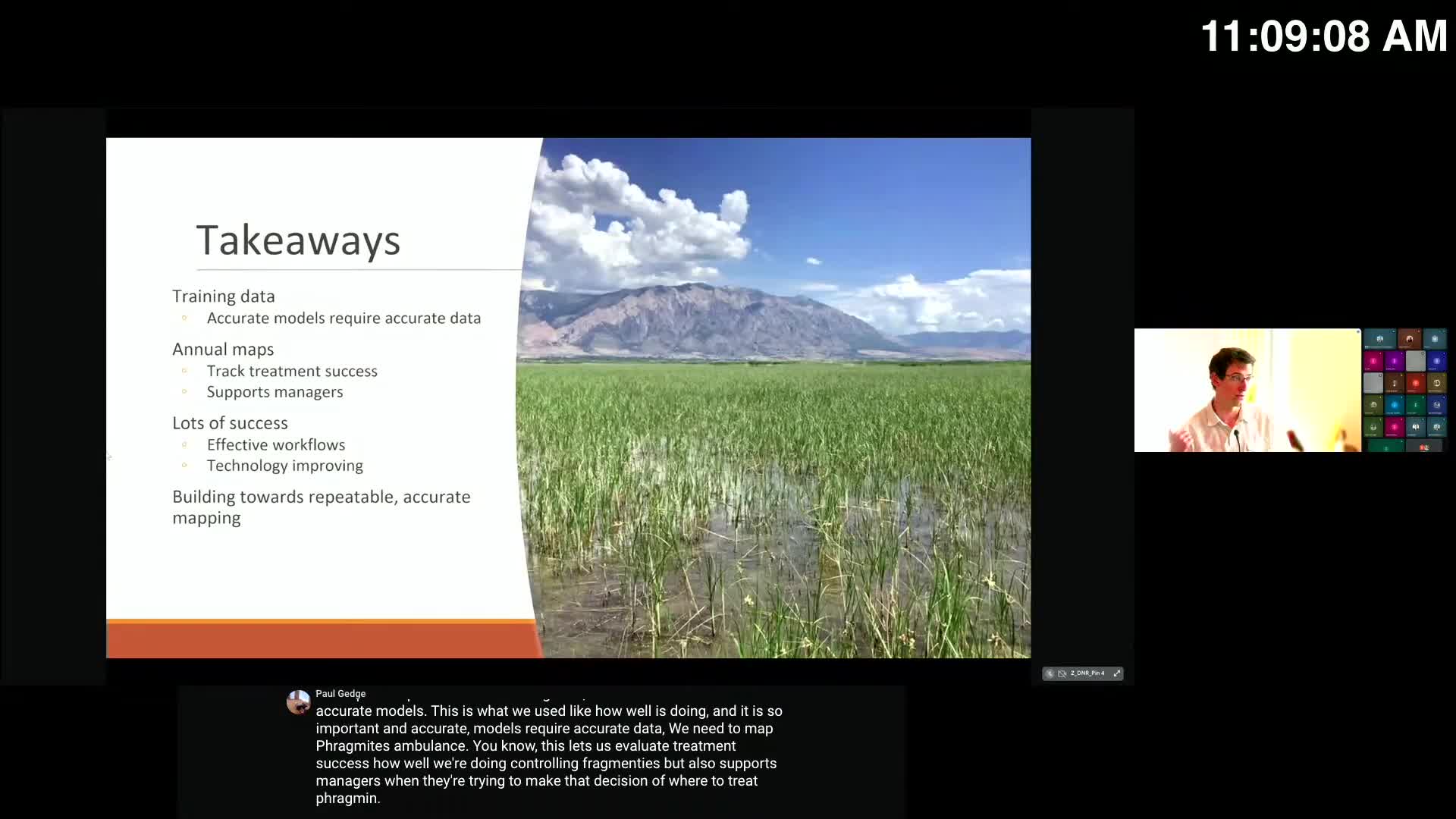Utah Geological Survey discusses Phragmites water consumption impact on Great Salt Lake
September 12, 2025 | Great Salt Lake Advisory Council, Utah Division of Environmental Quality, Utah Government Divisions, Utah Legislative Branch, Utah
This article was created by AI summarizing key points discussed. AI makes mistakes, so for full details and context, please refer to the video of the full meeting. Please report any errors so we can fix them. Report an error »

The Great Salt Lake Advisory Council convened on September 10, 2025, to discuss critical environmental issues affecting the Great Salt Lake, particularly focusing on the invasive plant species Phragmites and its impact on local hydrology. The meeting highlighted ongoing research and collaborative efforts aimed at understanding and mitigating the effects of this invasive species.
One of the key presentations was led by researchers from the Utah Geological Survey, Claire Spangenberg and Paul Inkebrandt. They discussed their recent projects aimed at quantifying the water consumption of Phragmites and its implications for the surrounding ecosystem. Their research, funded by the Forestry Fire and State Lands tech team, involved creating a water budget for the Nature Conservancy's Great Salt Lake Shorelines Preserve. This budget accounted for various components of the water system, including surface water inflows, groundwater inflows, and precipitation.
The researchers found that Phragmites significantly affects the hydrology of the area, consuming approximately 25,000 acre-feet of water annually. This translates to an estimated water usage of three to five acre-feet per acre of Phragmites, underscoring the plant's substantial impact on local water resources. The findings suggest that much of the surface water entering the preserve does not effectively reach Farmington Bay, as it is absorbed by the dense Phragmites growth.
The meeting also acknowledged the contributions of various stakeholders, including the Great Salt Lake Alliance, which aims to enhance private efforts supporting public initiatives for the lake's preservation. The discussions emphasized the importance of continued research and collaboration among government agencies, non-profits, and the community to address the challenges posed by invasive species and to protect the Great Salt Lake's ecosystem.
As the council moves forward, the implications of these findings will be crucial for developing strategies to manage water resources effectively and to mitigate the ecological impacts of invasive species in the region. The ongoing research and collaborative efforts signal a proactive approach to safeguarding the Great Salt Lake and its surrounding environments.
One of the key presentations was led by researchers from the Utah Geological Survey, Claire Spangenberg and Paul Inkebrandt. They discussed their recent projects aimed at quantifying the water consumption of Phragmites and its implications for the surrounding ecosystem. Their research, funded by the Forestry Fire and State Lands tech team, involved creating a water budget for the Nature Conservancy's Great Salt Lake Shorelines Preserve. This budget accounted for various components of the water system, including surface water inflows, groundwater inflows, and precipitation.
The researchers found that Phragmites significantly affects the hydrology of the area, consuming approximately 25,000 acre-feet of water annually. This translates to an estimated water usage of three to five acre-feet per acre of Phragmites, underscoring the plant's substantial impact on local water resources. The findings suggest that much of the surface water entering the preserve does not effectively reach Farmington Bay, as it is absorbed by the dense Phragmites growth.
The meeting also acknowledged the contributions of various stakeholders, including the Great Salt Lake Alliance, which aims to enhance private efforts supporting public initiatives for the lake's preservation. The discussions emphasized the importance of continued research and collaboration among government agencies, non-profits, and the community to address the challenges posed by invasive species and to protect the Great Salt Lake's ecosystem.
As the council moves forward, the implications of these findings will be crucial for developing strategies to manage water resources effectively and to mitigate the ecological impacts of invasive species in the region. The ongoing research and collaborative efforts signal a proactive approach to safeguarding the Great Salt Lake and its surrounding environments.
View full meeting
This article is based on a recent meeting—watch the full video and explore the complete transcript for deeper insights into the discussion.
View full meeting

